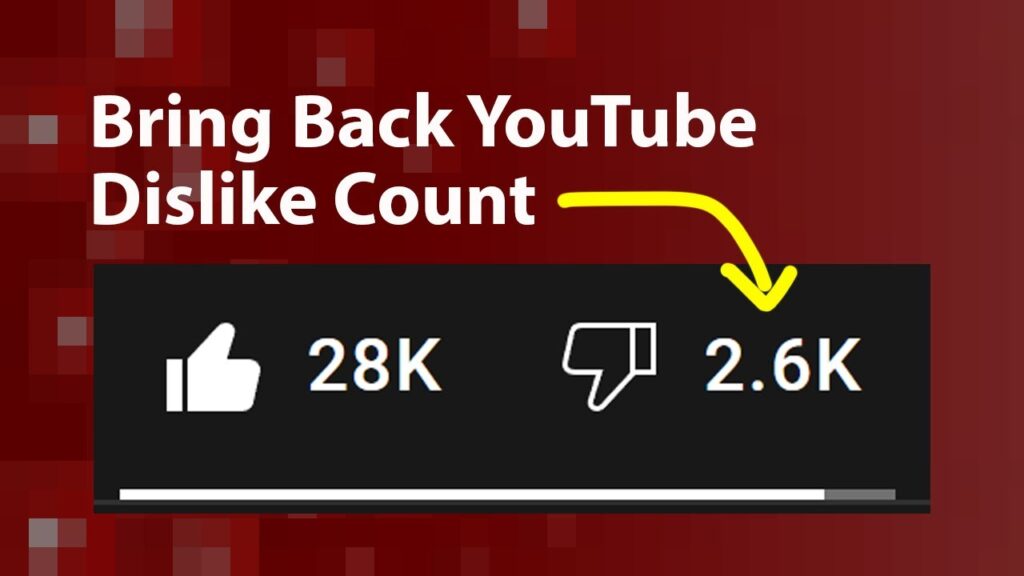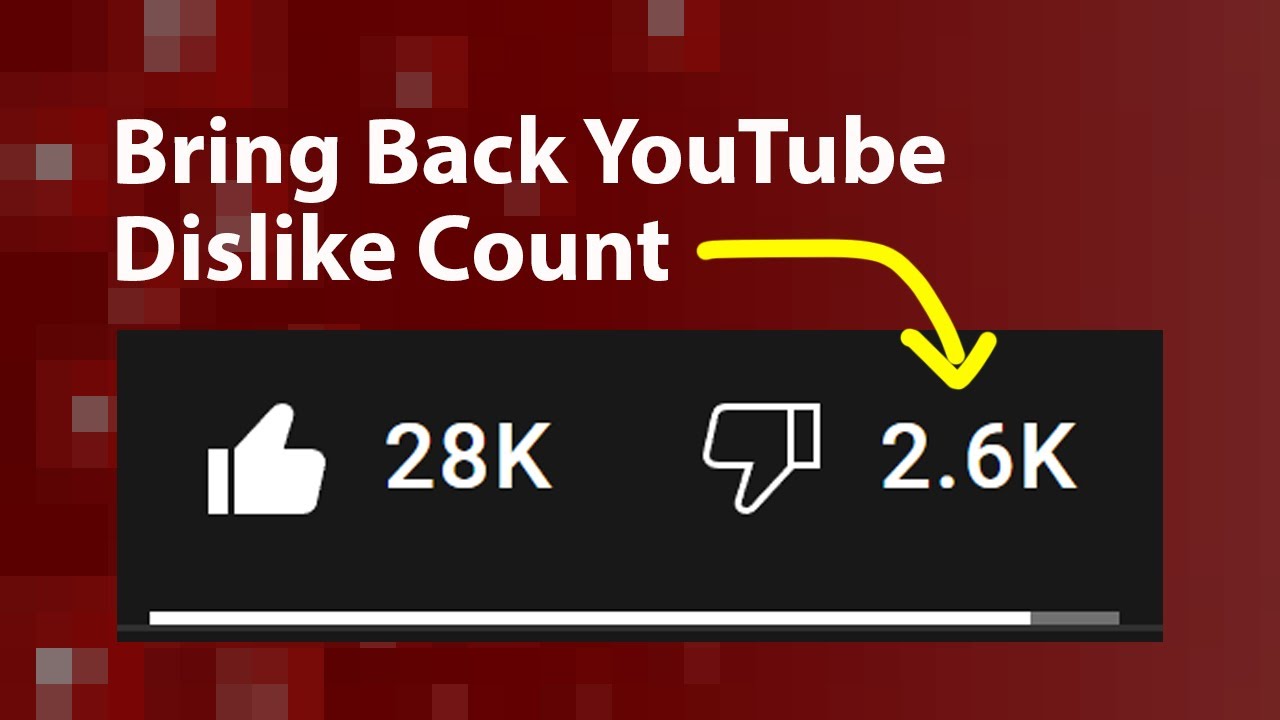
Understanding Viewer Dislike on YouTube: Reasons and Impact
The YouTube dislike button, an iconic feature of the platform, serves as a direct feedback mechanism for viewers. While likes indicate approval and enjoyment, dislikes communicate dissatisfaction. Understanding why viewers click the dislike button and the subsequent impact is crucial for content creators aiming to improve their videos and maintain a positive channel reputation. This article delves into the various reasons behind viewer dislike, explores its effects on content creators, and discusses strategies for managing and mitigating negative feedback.
Reasons Behind Viewer Dislikes
Numerous factors can contribute to a viewer dislike. These reasons can be broadly categorized into content-related issues, creator-related issues, and external factors.
Content-Related Issues
- Poor Quality Content: Low-resolution video, bad audio, and unprofessional editing are common reasons for dislikes. Viewers expect a certain level of production quality, and failing to meet those expectations can lead to negative feedback.
- Misleading Titles or Thumbnails: Clickbait tactics, where the title or thumbnail promises something the video doesn’t deliver, often result in dislikes. Viewers feel deceived and express their dissatisfaction through the dislike button.
- Inaccurate Information: Videos containing false or misleading information, especially in educational or news-related content, are likely to receive dislikes. Accuracy and fact-checking are paramount.
- Repetitive or Stale Content: Viewers may dislike content that feels repetitive, unoriginal, or lacks creativity. Offering fresh perspectives and unique ideas is essential for maintaining audience engagement.
- Offensive or Controversial Content: Videos containing hate speech, discrimination, or promoting harmful ideologies are highly likely to attract dislikes. Content creators must adhere to community guidelines and avoid promoting offensive material.
- Boring or Unengaging Content: If a video fails to capture the viewer’s attention or provide value, they may express their dissatisfaction through a dislike. Pacing, storytelling, and overall engagement are crucial.
Creator-Related Issues
- Inconsistent Upload Schedule: Viewers appreciate consistency. A lack of a regular upload schedule can lead to frustration and, in some cases, dislikes, especially from loyal subscribers.
- Lack of Engagement with Audience: Ignoring comments, failing to respond to questions, and neglecting audience feedback can create a disconnect and lead to negative sentiment.
- Controversial Actions or Statements: A creator’s personal actions or statements, especially those that are unethical or offensive, can negatively impact their channel and lead to an increase in dislikes on their videos.
- Perceived Arrogance or Entitlement: Viewers may dislike creators who come across as arrogant, entitled, or dismissive of their audience. Humility and gratitude are important for building a positive relationship with viewers.
- Promoting Excessive Self-Promotion: Overly aggressive self-promotion or constant requests for subscriptions and likes can annoy viewers and result in dislikes.
External Factors
- Targeted Dislike Campaigns: Sometimes, videos become the target of coordinated dislike campaigns, often driven by disagreements, rivalries, or political motives.
- Algorithmic Changes: Changes to YouTube’s algorithm can sometimes impact viewership and engagement, leading to an increase in dislikes for certain videos.
- Trending Controversies: Videos addressing controversial topics or participating in trending debates may attract dislikes from viewers who disagree with the creator’s perspective.
The Impact of Dislikes on Content Creators
The impact of dislikes extends beyond a simple numerical count. It can affect a creator’s morale, channel performance, and overall reputation. Understanding these effects is crucial for developing strategies to manage negative feedback effectively.
Psychological Impact
Receiving a large number of dislikes can be discouraging and demotivating for content creators. It can lead to feelings of self-doubt, anxiety, and even burnout. Creators may question their abilities, their content strategy, and their overall value proposition. The psychological impact can be particularly pronounced for creators who are new to the platform or who are highly invested in their work.
Algorithmic Impact
While YouTube has removed the public display of the dislike count, the algorithm still considers viewer dislike as a form of engagement. A high dislike ratio, especially when compared to likes, can negatively impact a video’s visibility and reach. The algorithm may interpret a high dislike ratio as a sign that the content is low-quality or irrelevant, leading to decreased recommendations and lower search rankings. However, even negative engagement signals some level of viewer interaction, which can sometimes benefit a video in unexpected ways. The intricacies of YouTube’s algorithm are constantly evolving, making it difficult to definitively quantify the exact impact of dislikes.
Reputational Impact
A high number of dislikes can damage a creator’s reputation and credibility. Viewers may perceive the creator as untrustworthy, incompetent, or out of touch. This can lead to a loss of subscribers, decreased viewership on future videos, and difficulty in securing sponsorships or collaborations. The reputational impact can be particularly severe for creators who rely on their online presence for their livelihood. Addressing negative feedback transparently and proactively can help mitigate the damage and rebuild trust with the audience.
Strategies for Managing and Mitigating Negative Feedback
While it’s impossible to eliminate dislikes entirely, content creators can implement strategies to manage and mitigate negative feedback effectively. These strategies focus on improving content quality, engaging with the audience, and addressing concerns proactively.
Improving Content Quality
- Invest in High-Quality Equipment: Using professional-grade cameras, microphones, and editing software can significantly improve the production value of videos.
- Thoroughly Research and Fact-Check Information: Ensuring accuracy and credibility is crucial for building trust with the audience and avoiding dislikes based on misinformation.
- Create Engaging and Original Content: Focus on providing value to the audience through informative, entertaining, or thought-provoking videos.
- Seek Feedback from Trusted Sources: Before publishing a video, share it with trusted friends, family members, or fellow creators for constructive criticism.
- Analyze Analytics and Identify Areas for Improvement: Pay attention to audience retention rates, engagement metrics, and comment sections to identify areas where the content can be improved.
Engaging with the Audience
- Respond to Comments and Questions: Actively engaging with the audience in the comment section can foster a sense of community and demonstrate that the creator values their viewers’ opinions.
- Address Criticisms Constructively: When responding to negative feedback, avoid defensiveness or personal attacks. Instead, acknowledge the concerns and offer a thoughtful explanation or apology if necessary.
- Conduct Polls and Surveys: Use polls and surveys to gather feedback on specific topics or video ideas and gauge audience preferences.
- Host Q&A Sessions: Regularly host Q&A sessions to address audience questions and concerns in a live or pre-recorded format.
Proactive Measures
- Be Transparent and Authentic: Viewers appreciate honesty and authenticity. Be upfront about your intentions and avoid misleading or deceptive practices.
- Acknowledge Mistakes and Apologize When Necessary: Everyone makes mistakes. Owning up to errors and offering a sincere apology can go a long way in rebuilding trust with the audience.
- Set Realistic Expectations: Avoid overpromising or making unrealistic claims in titles and thumbnails.
- Moderate Comments and Remove Offensive Content: Implement a comment moderation system to remove hate speech, spam, and other offensive content.
- Consider Disabling Comments or Ratings (as a Last Resort): If the level of negativity becomes overwhelming, consider temporarily disabling comments or ratings. However, this should be a last resort, as it can also limit positive engagement.
Conclusion
Understanding the reasons behind viewer dislike on YouTube and its potential impact is crucial for content creators. By focusing on creating high-quality content, engaging with the audience, and addressing concerns proactively, creators can minimize negative feedback and build a thriving and supportive community. While dislikes can be discouraging, they also provide valuable insights that can be used to improve content and strengthen the creator-viewer relationship. [See also: YouTube Analytics Guide] Ultimately, a balanced approach that embraces both positive and negative feedback is essential for long-term success on YouTube.

